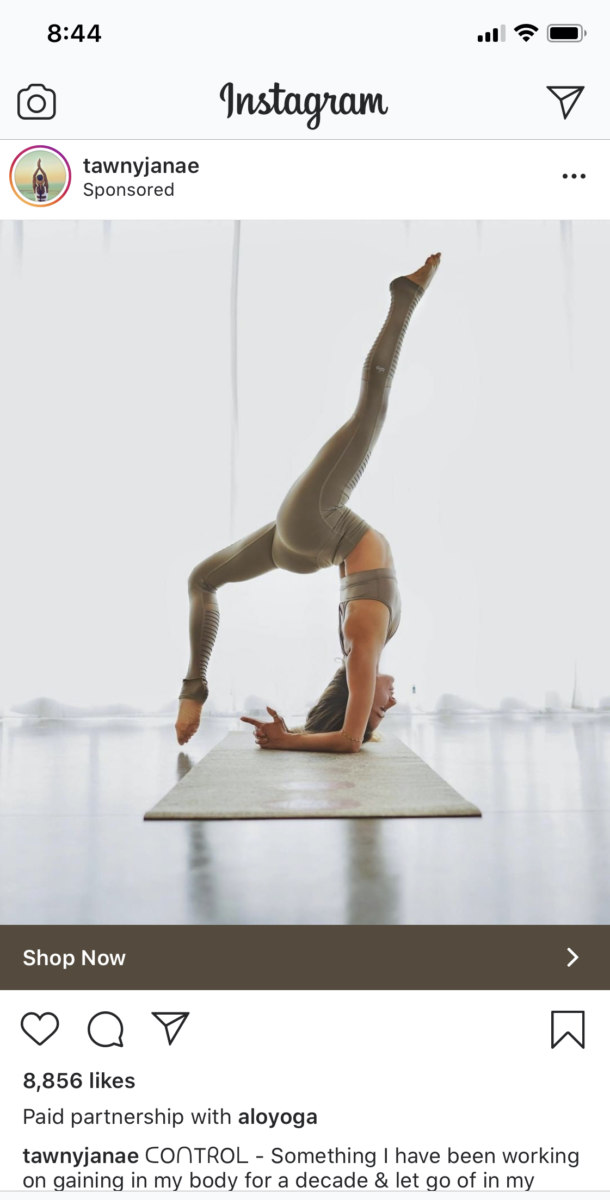Influencer dark posting might sound a bit, well, dark. Despite its ominous name, dark posting is actually a brilliant influencer marketing and paid social strategy designed to increase ROI and fully utilize influencers and the content they create for your brand campaigns. Although it might sound a bit shady at first, we assure you this approach is safe and ethical. As a matter of fact, we highly recommend it. Dark posting, when executed properly, is an integral element in amplifying any influencer marketing initiative. Dark posts can be accomplished across nearly every social media platform with advertisements, but today we’re focusing on a favorite: Instagram.
The What
So what exactly is influencer dark posting? It’s kind of like if Influencer Marketing and Paid Social had a baby. In three summary steps, it looks a bit like this:
- An influencer creates content for a brand. The influencer may or may not post this content to their page depending on the nature of the campaign and the type of ads that will be created.
- The influencer grants the brand advertising permissions (i.e. the brand now has access to the influencer’s account and the ability to create ads on behalf of the influencer).
- Leveraging the influencer’s account, the brand then creates paid social campaigns using the influencer’s content; thus pushing the posts out to more people than if the content were to be posted only organically.
The strategy was originally coined “dark posting” because these advertisements look like a normal post on a user’s timeline, but they don’t always have to necessarily live on a page as normal posts do. And for influencer dark posting specifically, it looks like the influencer is the one who is creating ads rather than the brand. If you’re curious about the transparency and ethics in all this, let us explain. Because the dark post is a form of advertisement, the content will automatically be labeled “Sponsored” and/or “Paid Partnership”, letting the audience know this was a brand deal.
Example: Influencer @TawnyJanae created content featuring @Aloyoga, which she posted to her actual Instagram page. This content was then turned into an advertisement and appeared on the timelines of targeted Instagram users who do not follow @TawnyJanae nor @Aloyoga.
The Why
Creating effective and successful influencer marketing campaigns takes a lot of work, time and energy for both the content creator and the brand. Utilizing dark posting strategies is one of the best ways to optimize the campaign and further increase ROI. It’s like putting a match to gasoline… It blows the content up and expands its reach to a highly targeted audience. And let’s be clear here – it’s not only the brand that is benefiting from this strategy. The influencer is essentially getting free advertising of their content to new potential followers too. It’s a win/win situation and certainly a major talking point when negotiating with your influencers.
It’s also worth noting the power and credibility in having these ads come from an influencer’s account rather than a brand’s. Here’s why. It’s common for Instagram users to quickly scroll past ads that come directly from brand accounts, as they can sometimes feel salsey and self-promotional in the wrong way. When coming from an influencer, ads can feel more engaging, human and relatable.
The How
After learning more about The What and The Why behind influencer dark posts, we’re sure you have a solid idea of how it all goes down. Although the fundamental action items are relatively easy to understand, there are details and tips along the way to make sure your strategy is honest, collaborative and effective. Below, we’re sharing a checklist to refer to when creating an influencer dark post campaign.
Phase 1: Kicking Off the Campaign
- Identify the key influencer(s) you would like to work with for your campaign, whatever it might be.
- Activate the partnership and make certain the influencer is aware of your intent to expand the collaboration into dark posting territory (this should be included in the campaign contract). Remember that being transparent and up front is vital in building authentic influencer relationships.
- Have the influencer give you (the brand or ad agency) access to advertising permissions. As with any Instagram advertising, this is done via the Facebook Ad Account.
- Once content has been created as outlined in the contract and approved by the brand, have the influencer post it to his or her page (if applicable for the ads you’re running). If you’re building ads that are truly dark posts and won’t live on the influencer’s page at all, be sure the influencer sends you the raw assets for ad creative.
Phase 2: Going Dark
- With access to the influencer’s handle (a.k.a. their account), use Facebook Ads Manager to build paid social campaigns designed to send the content to targeted audiences as you would any other paid social campaign.
- Consider different variables, such as where this ad will be shared (stories, feed, etc.), copy, headlines, asset types, A/B testing, and so forth.
Phase 3: Measuring Stats
- Take an honest look at the data. See what worked best and implement your findings in your next dark post campaign.
- While likes, follows and conversions are definitely important markers, we recommend going beyond these KPIs. Consider other important stats, like comments, saves and shares.
Bonus Phase: Repost!
We’re all about low hanging fruit. If and when appropriate, repost the influencer’s original content on your brand page and be sure to tag them. Reposting content from influential accounts can position your brand as a leader in the space, can increase awareness and credibility, and helps to build community.
We hope this information sheds some light on dark posting. We know it’s a lot to take in and we’re here to help. Ready to talk? Let’s do it!
